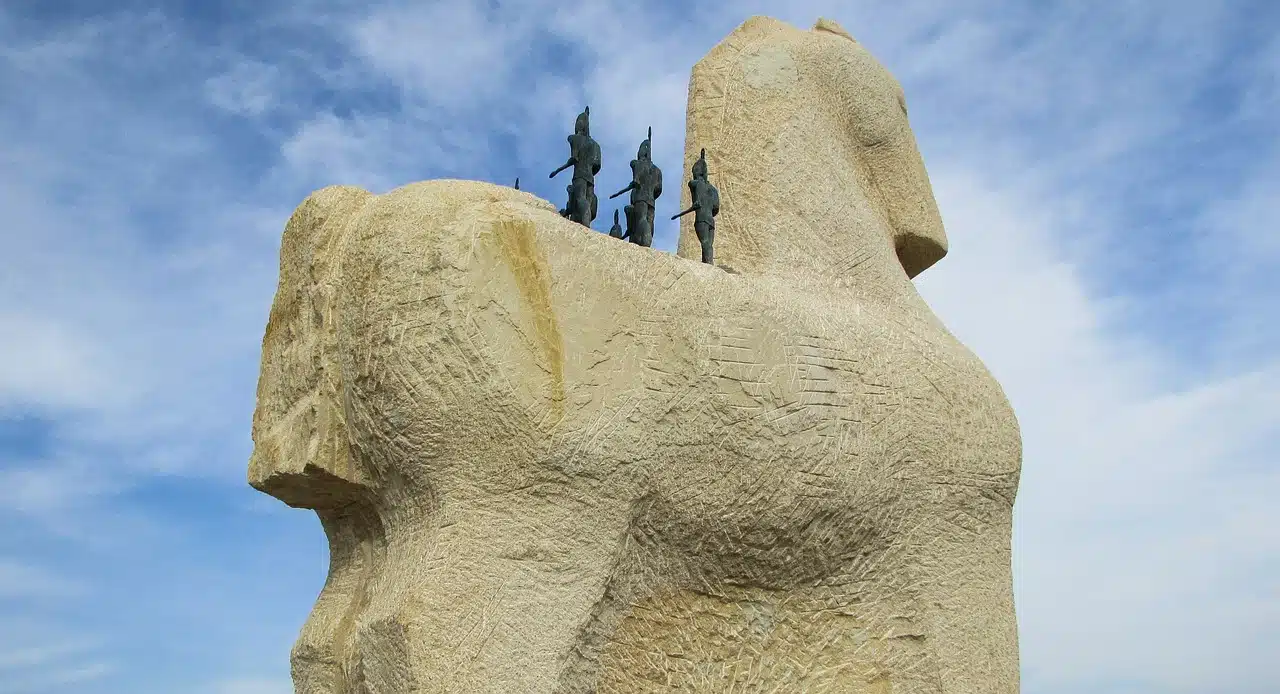
Trojan is that linked to the ancient city of Troy.
Trojan is an adjective that refers to that or that belonging to or relating to the ancient city of Troy . The application of the term, which comes from the Latin Troianus , is linked to the legend of the Trojan Horse .
It is important to differentiate between historical Troy and legendary Troy . The real city of Troy was located in the present-day Turkish province of Çanakkale (next to the Dardanelles Strait ). The legendary Troy, on the other hand, is the one that is mentioned in epic poems such as the Iliad and the Odyssey .
A war between history and legend
It is estimated that the so-called Trojan War occurred sometime between 1250 BC. C. and 1184 BC. C. , without there being any details in this regard. It is believed that, after the abduction of Helen of Sparta by the Trojan prince Paris , the Mycenaean Greeks invaded Troy. The Trojans who managed to survive traveled to Carthage and then to the Italian Peninsula , where their descendants would found Rome .
Another unavoidable aspect when talking about this city is the history of the Trojan Horse . The myth says that the Greeks sent an immense wooden horse to the Trojans as an offering to Athena . The Trojans accepted the gift and brought it into their city . At night, a group of Greek soldiers emerged from inside the horse, opened the gates of Troy and allowed the invasion.

A type of malicious software is called a Trojan.
Trojan viruses
This scheme is used by a type of malicious software known precisely as a Trojan . It is an application that, seemingly harmless, is executed by the user and ends up allowing remote access to the computer without the user realizing it.
In the seemingly infinite universe of the Internet , various types of applications coexist and there are those who dedicate their time to the development of programs that aim to harm their users, either through the deletion of some of their files, or the breakdown of their equipment. or some kind of scam.
Among the countless forms that computer attacks can take, Trojans are especially known, in part because they have the most variants . Most users are not aware of the name given to each type of Trojan, which is why they tend to mistakenly lump them under the label of " virus ."
Classification according to type
Below are some of the most common types of Trojans, indicating their name and the damage they cause to their victims:
- Backdoor Trojan : as its name indicates ( "back door" ), it is an application that opens an unconventional access channel in the system, which allows other malicious programs ( malware ) or people to enter it without problem some.
- Drooper Trojan : has the peculiarity of executing other malicious applications when executed.
- Keylogger Trojan : its tasks consist of carrying out a complete record of the keys pressed by the user, with the aim of stealing their confidential information (credit card numbers, passwords, personal data). There are also some capable of taking screenshots and silently sending them to their creators.
- Downloader Trojan : They have the objective of downloading other programs while they are running.
- Bot Trojan : turns a computer into a kind of zombie that, together with the rest of the computers it attacks, will form a network known as a botnet .
How to avoid Trojan attacks
Some common tips to avoid attacks by Trojans are:
- Keep the operating system and its programs updated, especially the Internet browser.
- Use a recommended Antivirus program, whose updating should be a priority.
- Use firewalls (also known as “firewalls” or “fire walls”).
- Avoid virtual payments and banking procedures from public places, such as Internet cafes.
